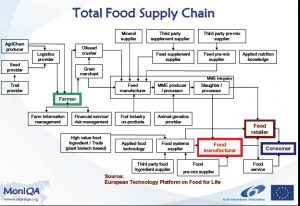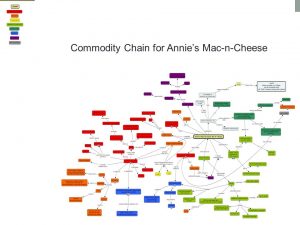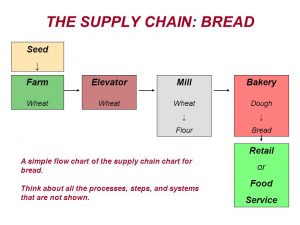It’s amazing how many different places our food comes from. We don’t think about it because it’s so easy to take it for granted – we eat food every day. But the entire process is insane. Suppliers, producers, resellers, transporters, and more.

(full size image here)
Now look at the supply chain for Annie’s Mac n Cheese.

(full size image here)
It’s overwhelming. Even something seemingly simple as bread has plenty of steps.

Seed. ↓ Farm. Wheat. Elevator. Wheat. Mill. Wheat. ↓ Flour. Bakery. Dough. ↓ Bread. Retail. or. Food. Service. A simple flow chart of the supply chain chart for bread. Think about all the processes, steps, and systems that are not shown.
(full size image here)
Now what is “real food”? Michael Pollan says ask your grandmother, but in the context of these supply chains we can think of it differently. Real food doesn’t come from a lab. Real food comes from the source. Real food contains what you think it contains. Macaroni and cheese has macaroni, cheese, milk, and maybe some seasonings. Annie’s Mac n Cheese has so many things that to fit it all in one graphic the font is incomprehensibly small.
Real food has a simpler supply chain.
When I buy vegetables from the farmer’s market, the supply chain is almost nonexistent. There’s no graphic for it because it would be boring. The farmer grew the vegetables, brought them, and sold them to me. Maybe there are some more steps if the farmer used pesticides, or got their seeds from someone else, or whatever.
The point is, it’s real food.
Of course, it’s not all black and white, and for most foods we don’t know where they came from, or what it took to make them. But we should. And if we did, it would change how we thought about them. And if we knew where every food came from, it would change the way we eat.
All in all it’s just food for thought.
